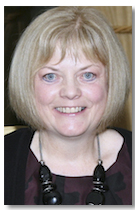Alkaptonuria: Infant indication, adult onset
September 2010 Simon Laxon was, unusually, diagnosed with Alkaptonuria (AKU) when he was six weeks old. The doctors didn’t know much about Alkaptonuria and told my parents that it was a harmless genetic disorder that caused no problems in younger life but would cause the cartilage in my ears and nose to turn blue as I got older. It didn’t have much impact on me while I was young, and virtually symptom-free.” says Simon.
Simon Laxon was, unusually, diagnosed with Alkaptonuria (AKU) when he was six weeks old. The doctors didn’t know much about Alkaptonuria and told my parents that it was a harmless genetic disorder that caused no problems in younger life but would cause the cartilage in my ears and nose to turn blue as I got older. It didn’t have much impact on me while I was young, and virtually symptom-free.” says Simon.
Diagnosis of Alkaptonuria (AKU) can be possible in infancy but is often delayed until adulthood long after symptoms manifest
It wasn’t until 1997, when I collapsed at work with severe back pain that I realised how much this disorder was going to tear my world apart. ” Because Simon’s previous hospital records were destroyed in a fire, his back pain was initially diagnosed as arthritis. It took 4 years for doctors to understand that AKU was the root of Simon’s problem.
Alkaptonuria (AKU), the incidence of which is 1-9 in a million, can be difficult to diagnose. It is a genetic disease that affects all body systems. Arthropathy – joint disease characterized by swelling and enlarged bones – and discolouration of the skin cause the greatest disability.
Many affected individuals are asymptomatic and unaware of the disease until adulthood. Dark staining of the diapers sometimes can indicate the condition in infants but usually symptoms present much later in life.
 Anne Kerrigan’s presentation of the condition followed this more usual route. Like Simon, Anne was an active sports loving child but, unlike Simon, she was not diagnosed with AKU until she was 50 despite presenting symptoms in 1992, at the age of 33. Anne began to experience severe back pain and was diagnosed with osteo-arthritis.
Anne Kerrigan’s presentation of the condition followed this more usual route. Like Simon, Anne was an active sports loving child but, unlike Simon, she was not diagnosed with AKU until she was 50 despite presenting symptoms in 1992, at the age of 33. Anne began to experience severe back pain and was diagnosed with osteo-arthritis.
“I think my ears first turned blue around 2003, a friend mentioned it. My eyes started getting pigment marks around 2004. My knees had acted up for years, sometimes they would give way for no reason, but in 2005 both knees became very swollen and painful after a night out bowling with friends. I had every treatment you can think of – painkillers, steroid injections, keyhole surgery – on my left knee. I was told the inside of my knee was black and it was dried blood!” Anne explains. She spent six months seeing a haematologist. They found nothing wrong with her blood so she had a total knee replacement on 7th October 2007. She was told she had a rare disease called PVNS. “My knee was never pain free and become swollen after activity so I had another knee replacement in February 2009. This knee continues to give pain and my right knee needs replacing.”
Anne was diagnosed with AKU in December 2009. “I was shocked but glad to know what was wrong with me and have a name for it,” says Anne. “The biggest problem is feeling isolated and people not understanding what Alkaptonuria is.”
The biggest problem for Simon is not being able to lead a ‘normal’ life. “I haven’t been able to support my family financially and the burden is now on my wife’s shoulders. I can’t play outdoor games with my children. At 44 years old, on the outside I look fairly healthy but on the inside I feel like I am 100 years old”
For Simon and Anne the support of family and friends is of paramount importance but as Anne explained “I really look forward to meeting other AKU patients who will understand how I feel.” To find out more about the condition and lessen their sense of isolation they got in touch with the AKU Society. Anne is newly acquainted with the AKU Society but Simon has a longer connection to AKU and the AKU Society, which was set up in 2003. He became friends with Robert Gregory, founder of the society and himself living with the disease, over 12 years ago.
The AKU Society has 78 UK members and about 500 members worldwide. Bev Hebden, their project manager, explains that their aims are to raise awareness of the condition, to identify those living with the condition, and to give support and information. They have connections with other Alkaptonuria groups, such as Alcap in France and have recently become members of EURORDIS. They aim to participate in at least 3 conferences a year. In October 2010 they will be attending a GP rheumatology conference in Harrogate UK. In September they are holding a patient get-together in Liverpool UK.
For Simon and Anne the society is a valuable resource, both in terms of what they receive and what they give back. Simon explains, “Hopefully, in my lifetime, there will be a cure found for this destructive disorder. I am willing to help out in any way I can, whether by spreading the word or taking part in clinical trials, if it helps just one person in the future.”
|

